Introduction: The Liver’s Role in Whole-Body Wellness
The human liver is often underappreciated until it starts to show signs of dysfunction, yet this remarkable organ works around the clock to support every aspect of your well-being. As a central hub of metabolism, detoxification, digestion, and immune defense, the liver does far more than most people realize. Understanding liver function in the digestive system requires an in-depth look not only at what it does during digestion but also how it integrates with other body systems to protect long-term health. With increasing attention paid to liver-related diseases, such as non-alcoholic fatty liver disease (NAFLD) and hepatitis, it becomes essential to ask: what organ system is the liver part of, and why does it matter?
You may also like: Macronutrients vs Micronutrients: What the Simple Definition of Macronutrients Reveals About Your Diet and Health
The answer helps unlock the broader relevance of liver health for preventive care, dietary planning, and overall wellness strategies. In this article, we’ll explore the anatomy and physiology of the liver, clarify how liver function in the digestive system operates, and examine how the liver interacts with other systems such as the endocrine, circulatory, and immune systems. We’ll also clarify a common question—”the liver is part of what system?”—and provide practical advice for maintaining optimal liver function across the lifespan.
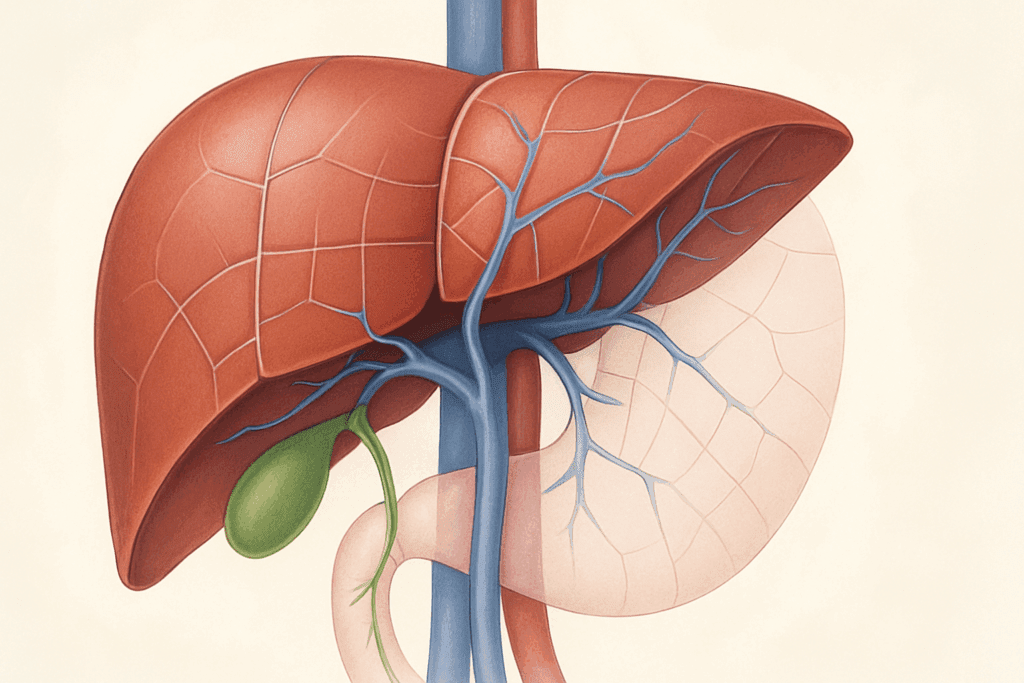
Anatomy of the Liver: A Closer Look at Structure and Function
The liver is the largest solid organ in the body, typically weighing around three pounds in a healthy adult. Located just below the diaphragm on the right side of the body, the liver is reddish-brown and has a soft, pliable texture. Its external anatomy features two primary lobes—right and left—separated by a band of connective tissue known as the falciform ligament. Internally, however, the liver is divided into eight functional segments, each with its own vascular supply and bile drainage system. This segmentation allows for remarkable surgical precision in liver procedures.
One of the most fascinating elements of the liver’s anatomy is its dual blood supply. Blood enters the liver through both the hepatic artery, which brings oxygen-rich blood from the heart, and the portal vein, which carries nutrient-rich blood from the intestines. This unique configuration allows the liver to perform its role in detoxification and nutrient processing directly after digestion. The liver’s smallest units, called lobules, house hepatocytes—specialized liver cells that are responsible for carrying out the majority of liver functions, from bile production to drug metabolism.
Understanding the liver’s structural complexity sets the stage for appreciating its functional versatility. The close relationship between form and function is what makes the liver so efficient, yet also vulnerable to disease if compromised by alcohol, infections, or metabolic disorders.
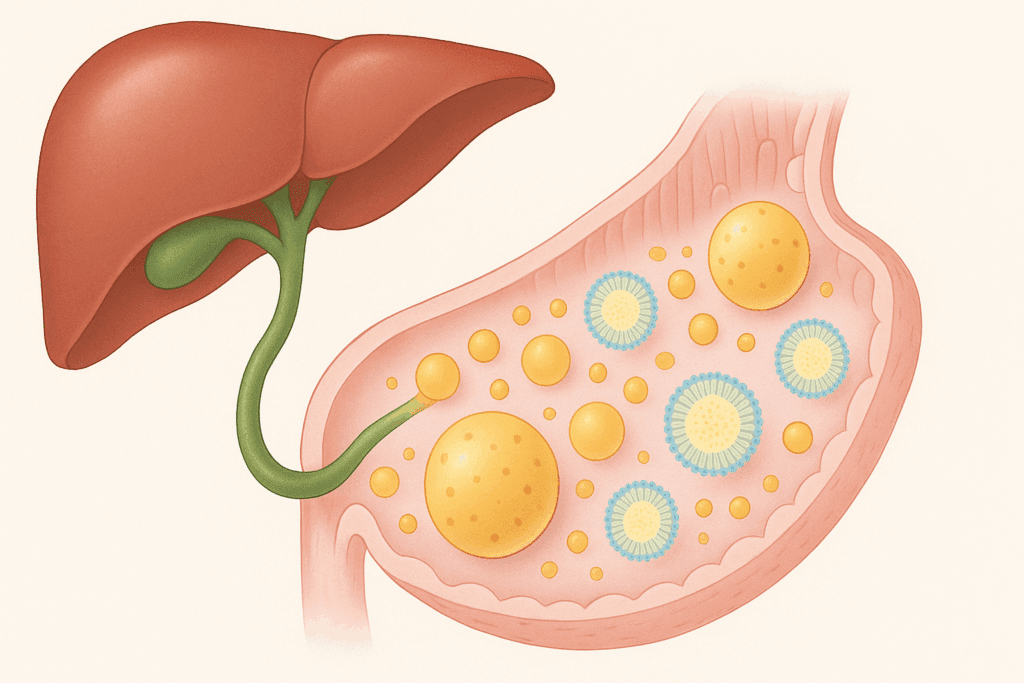
Liver Function in the Digestive System: More Than Bile Production
Although the liver performs hundreds of distinct biochemical reactions, one of its best-known roles is within the digestive system. At its core, liver function in the digestive system revolves around the production of bile—a greenish-yellow fluid that helps emulsify fats, making them easier to absorb in the intestines. Without bile, the body would struggle to break down and absorb fat-soluble vitamins such as A, D, E, and K. This deficiency could lead to problems in vision, bone health, immune function, and blood clotting.
The liver continuously produces bile, which is either delivered directly to the small intestine via the common bile duct or stored temporarily in the gallbladder. When food containing fats enters the digestive tract, the gallbladder contracts and releases bile to aid in the digestion process. This relationship underscores how intimately the liver is involved in digestive function—even though it never comes into direct contact with the food we eat.
Beyond bile production, the liver also plays a major role in regulating blood glucose during digestion. When carbohydrates are broken down into glucose and absorbed into the bloodstream, the liver helps stabilize blood sugar levels by converting excess glucose into glycogen for storage. Later, when blood sugar drops, the liver converts glycogen back into glucose to maintain energy balance. In this way, liver function in the digestive system is essential for both immediate nutrient absorption and long-term energy regulation.
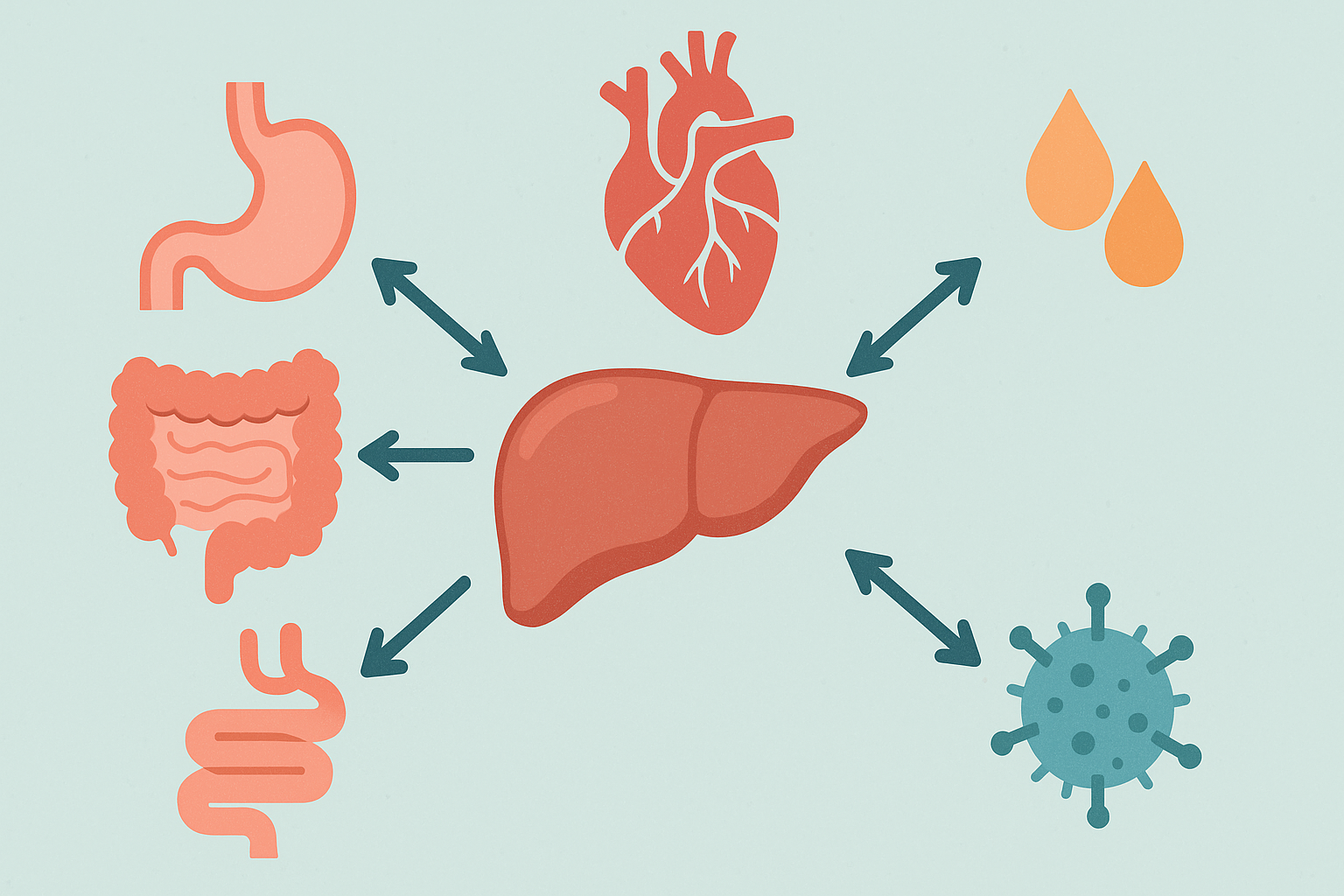
What Organ System Is the Liver Part Of? The Hepatic System Explained
To answer the frequently asked question—“the liver is part of what system?”—it’s important to clarify the organ’s systemic relationships. Anatomically and functionally, the liver belongs to the digestive system. However, because of its diverse range of responsibilities, it is often considered the central organ of the hepatic system, a subsystem within the digestive tract that specifically encompasses the liver, gallbladder, and associated bile ducts.
Functionally, the liver also intersects with the circulatory, endocrine, lymphatic, and immune systems. For instance, its regulation of blood clotting factors directly ties it to the circulatory system. It also metabolizes hormones, which places it within the functional realm of the endocrine system. Its filtration of pathogens and debris—thanks to Kupffer cells within hepatic sinusoids—illustrates its role in the immune system.
So, while the liver is part of the digestive system by classification, it is functionally part of several systems. This multifunctionality is why disorders of the liver can lead to symptoms in seemingly unrelated areas of the body—from brain fog and fatigue to hormone imbalances and immune dysfunction.
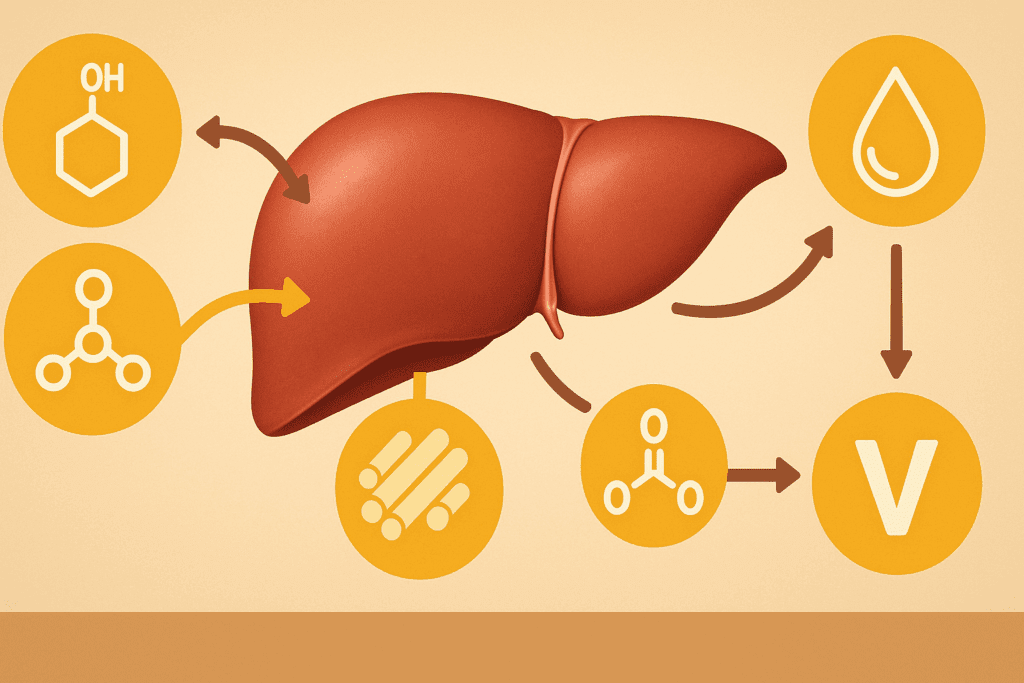
The Liver’s Metabolic Roles: Processing Nutrients and Synthesizing Vital Compounds
One of the liver’s core roles is in metabolism, where it acts as a biochemical powerhouse. After food is digested and nutrients are absorbed into the bloodstream, the liver determines how those nutrients are processed, stored, or released. Proteins are broken down into amino acids, and the liver converts the nitrogen-containing waste product into urea, which is then excreted by the kidneys. This process, known as the urea cycle, is vital for preventing the accumulation of toxic ammonia in the blood.
Fats, too, are processed in the liver. The organ synthesizes cholesterol and lipoproteins that help transport fat molecules throughout the body. It also regulates lipid levels in the blood, storing excess fat when needed or mobilizing fat stores for energy. Glucose regulation, as mentioned earlier, remains a foundational role for the liver, and the organ responds dynamically to insulin and glucagon—two hormones that signal whether the body should store or release glucose.
The liver also stores essential vitamins and minerals, such as vitamin B12, iron, copper, and vitamin A, and releases them into circulation when required. These reserves make the liver a nutritional reservoir and a guardian of systemic balance. When liver function in the digestive system is impaired, it can compromise these metabolic pathways, leading to systemic deficiencies and imbalances.
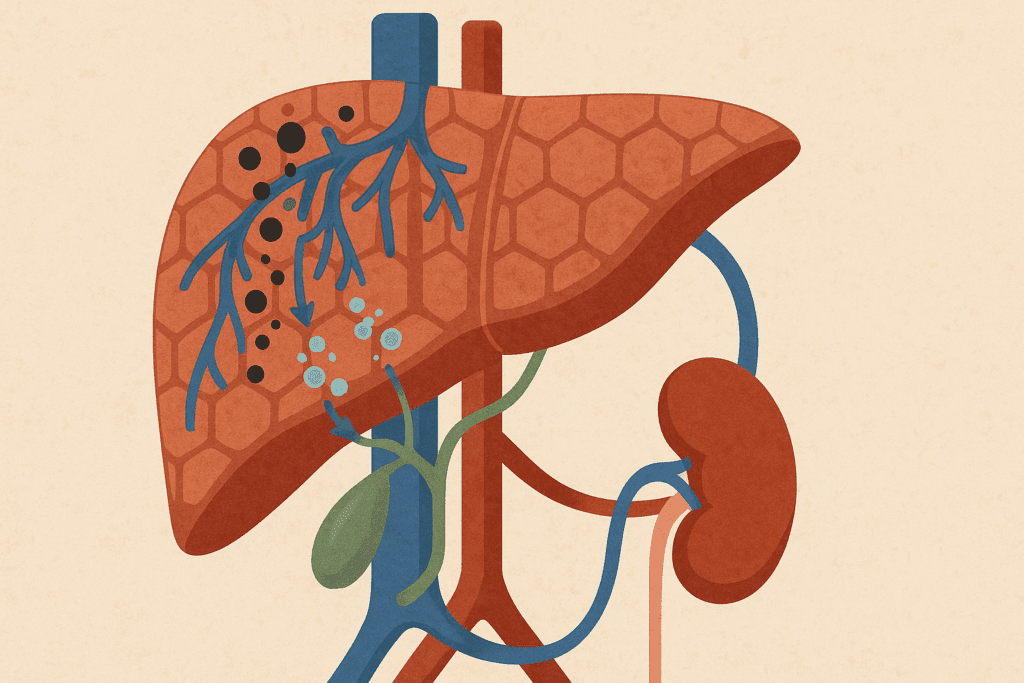
Detoxification: How the Liver Protects Your Body from Harm
Perhaps the most widely appreciated function of the liver is detoxification. Every day, your liver filters around 1.4 liters of blood per minute, removing toxins, metabolic waste, and foreign chemicals. The liver uses a two-phase detoxification process involving enzymatic reactions that convert fat-soluble toxins into water-soluble compounds, which can then be excreted through bile or urine.
The liver’s cytochrome P450 enzyme system is especially important in metabolizing medications, alcohol, and environmental chemicals. While this system is highly efficient, it can become overwhelmed by chronic exposure to harmful substances, including excessive alcohol, over-the-counter medications like acetaminophen, or environmental pollutants.
Additionally, the liver houses specialized immune cells called Kupffer cells, which act as sentinels to destroy pathogens and worn-out cells. This function helps explain why liver infections or damage can compromise immune function. Understanding what organ system the liver is part of provides insight into how detoxification is not an isolated task—it’s intricately connected with immune surveillance and nutrient processing, reinforcing the organ’s centrality in total body health.
The Liver’s Role in Hormone Balance and Immune Regulation
Beyond digestion and detoxification, the liver contributes significantly to hormonal balance and immune modulation. It helps break down and clear out excess hormones, including insulin, estrogen, and cortisol, preventing imbalances that could otherwise disrupt metabolic or reproductive health. For women, this function becomes especially critical during menopause, pregnancy, or hormonal therapy.
The liver also produces proteins called acute-phase reactants in response to inflammation. These proteins help the body respond to injury and infection, playing a critical role in innate immunity. Liver disease can suppress this response, leaving the body more vulnerable to infections and slower to recover from injury.
These roles illustrate that while the liver is part of the digestive system, its functional reach goes far beyond digestion. Understanding these cross-system relationships helps medical professionals recognize early warning signs of liver dysfunction, even when they appear in the form of hormonal or immune symptoms.
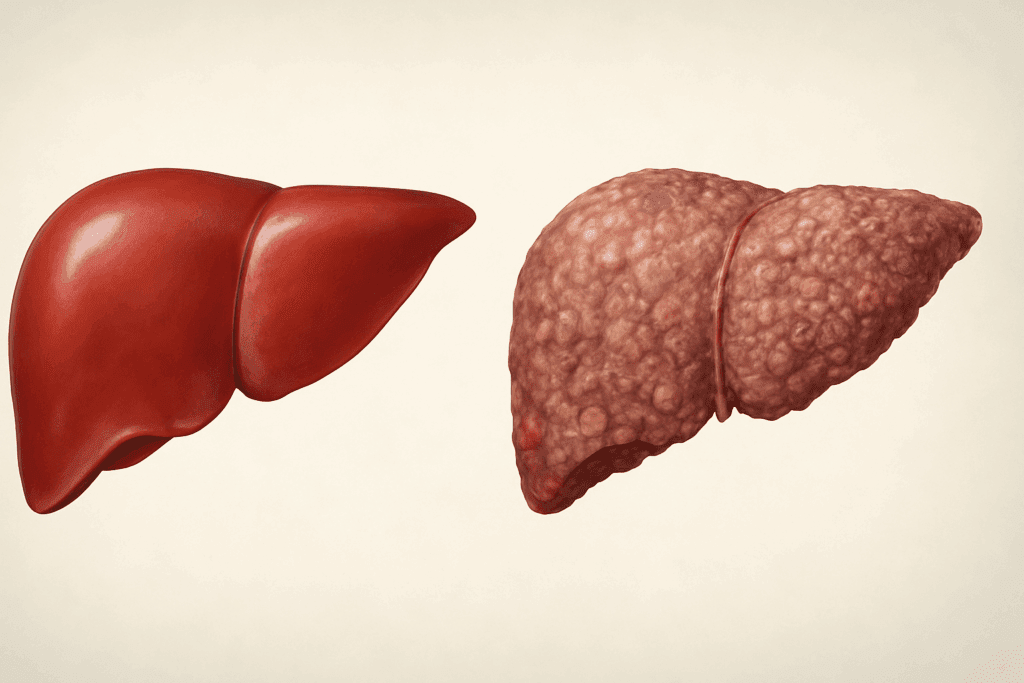
What Happens When Liver Function Is Compromised?
When the liver’s ability to function is impaired, the effects ripple through every system it touches. One of the earliest signs of liver trouble is elevated liver enzymes in bloodwork, indicating that liver cells are damaged and leaking their contents. As dysfunction progresses, symptoms like jaundice, fatigue, poor appetite, and abdominal swelling may appear.
Chronic conditions such as fatty liver disease, hepatitis, and cirrhosis can severely impair liver function in the digestive system. These diseases may disrupt bile production, glucose metabolism, and detoxification pathways. Advanced liver disease often results in hepatic encephalopathy—a neurological condition caused by the buildup of toxins like ammonia in the bloodstream, leading to confusion and, in severe cases, coma.
This cascade of dysfunction highlights the importance of liver screening, particularly in populations at risk due to alcohol use, obesity, diabetes, or hepatitis infection. Early detection can lead to lifestyle interventions and medical treatments that halt or even reverse the progression of liver disease.
Practical Strategies for Supporting Liver Health
Maintaining a healthy liver is not only possible but essential for long-term wellness. One of the most effective strategies is dietary modification. Diets low in processed sugar, high-fructose corn syrup, and trans fats reduce the risk of fatty liver accumulation. Incorporating nutrient-dense foods such as leafy greens, cruciferous vegetables, and fiber-rich whole grains helps support the liver’s natural detoxification pathways.
Regular physical activity improves insulin sensitivity and reduces hepatic fat content, both of which are critical in preventing non-alcoholic fatty liver disease. Limiting alcohol intake and avoiding illicit drugs and unnecessary medications further reduces the toxic burden on the liver.
Finally, staying current with vaccinations for hepatitis A and B, as well as regular checkups that include liver enzyme tests, can provide early insight into your liver’s health status. For those wondering what organ system the liver is part of, understanding this helps reinforce the importance of holistic lifestyle habits that consider not just digestion, but metabolic, hormonal, and immune balance.
Frequently Asked Questions (FAQ): Understanding the Liver’s Role in Digestion and Systemic Health
1. Can liver function in the digestive system affect how medications are absorbed or metabolized?
Absolutely. While most people associate drug metabolism with the liver’s detoxification role, liver function in the digestive system also influences how medications are processed. Once drugs are absorbed in the intestine, they enter the portal circulation and are delivered directly to the liver for what’s known as first-pass metabolism. This process can significantly alter a drug’s potency before it reaches systemic circulation. Individuals with compromised liver function may experience reduced clearance or altered drug activation, which can either diminish effectiveness or increase toxicity. For patients on long-term medications, understanding liver function in the digestive system is essential for managing dosage, interactions, and side effects.
2. The liver is part of what system besides digestion?
The liver is part of what system can depend on whether you’re asking from a functional or anatomical perspective. Anatomically, the liver is classified within the digestive system, but functionally, it interacts closely with the circulatory, immune, and endocrine systems. For example, the liver produces clotting factors critical for cardiovascular health and stores fat-soluble hormones, thus integrating endocrine regulation. It also plays a key role in immune surveillance, filtering pathogens from the blood via Kupffer cells. This multifaceted involvement explains why liver diseases often present with systemic symptoms—because the liver isn’t just supporting digestion; it’s orchestrating balance across multiple organ systems.
3. What happens to digestion when liver function is impaired but the intestines remain healthy?
Interestingly, even if the intestines are functioning normally, impaired liver function in the digestive system can still lead to significant nutritional deficiencies. This is primarily due to inadequate bile production or release, which compromises the digestion and absorption of fats and fat-soluble vitamins. Over time, individuals may develop deficiencies in vitamins A, D, E, and K, leading to issues such as poor night vision, weakened bones, compromised immune response, and abnormal bleeding. Additionally, impaired protein metabolism in the liver can lead to muscle wasting, even when dietary intake appears sufficient. In this way, a healthy intestine is not enough—optimal digestion requires robust liver function as well.
4. How does the liver’s role in hormone metabolism relate to its function in the digestive system?
While it may seem unrelated, hormone regulation is intricately tied to liver function in the digestive system. The liver metabolizes and clears hormones such as insulin, estrogen, and cortisol—substances that influence appetite, metabolism, and stress responses. If the liver’s detoxification or enzymatic pathways are impaired, these hormones can accumulate and disrupt digestion. For instance, excess estrogen may slow bile flow, while impaired cortisol breakdown can affect blood sugar levels and gut motility. This hormonal feedback loop illustrates that digestion is not an isolated function—it reflects the liver’s broader systemic roles, confirming why the question of “what organ system is the liver part of” must consider these overlaps.
5. Can changes in liver health influence mental clarity or mood?
Yes, and this is often underappreciated. Although brain function seems far removed from liver function in the digestive system, the two are connected by the gut-liver-brain axis. When the liver is unable to effectively clear toxins—such as ammonia or inflammatory cytokines—these substances can cross the blood-brain barrier and impact cognitive function. Conditions like hepatic encephalopathy demonstrate this clearly, where liver dysfunction results in confusion, irritability, and even coma. Mild liver issues can still cause brain fog or fatigue due to subtle imbalances in neurotransmitter precursors or micronutrient levels. Recognizing that the liver is part of what system includes understanding its neuropsychiatric impact, not just its digestive responsibilities.
6. How does exercise influence liver function in the digestive system?
Physical activity has a surprisingly profound effect on liver health and digestive efficiency. Moderate aerobic exercise improves insulin sensitivity, reduces hepatic fat content, and increases bile flow—all of which enhance liver function in the digestive system. Exercise also improves circulation, which enhances the liver’s ability to filter blood and support nutrient metabolism. Over time, consistent activity can reduce the risk of non-alcoholic fatty liver disease and support more stable digestive function, especially in individuals with metabolic syndrome. By viewing the liver as part of what system includes musculoskeletal and metabolic interactions, we better understand how lifestyle directly shapes organ performance.
7. What organ system is the liver part of when considering long-term immune defense?
When evaluating what organ system is the liver part of through the lens of immunology, the liver becomes a key immune organ. Its specialized macrophages, known as Kupffer cells, line the liver’s sinusoids and act as first responders to pathogens that enter via the gut. These cells detect, capture, and break down bacteria, viruses, and cellular debris before they can trigger systemic infections. Additionally, the liver produces acute-phase proteins during infection or injury, modulating inflammation throughout the body. So while the liver is traditionally grouped within the digestive system, its constant immune activity underscores its central role in immune homeostasis, making it a hybrid organ with cross-system responsibilities.
8. Is it possible to regenerate damaged liver tissue, and does this affect digestion?
Yes, the liver’s regenerative capacity is one of its most unique traits, but this doesn’t guarantee full recovery of digestive support. Although hepatocytes can divide and replenish damaged areas, chronic damage from alcohol, fatty deposits, or viral infections may lead to scar tissue, which impairs functional recovery. When scar tissue replaces bile ducts or blood vessels, liver function in the digestive system can become permanently compromised. Even after partial regeneration, patients may need to modify their diet, supplement fat-soluble vitamins, or monitor liver enzymes for years. The regenerative aspect highlights why it’s critical to support the liver early—even though it can heal, the process isn’t limitless or risk-free.
9. How do fasting and intermittent diets impact liver performance?
Fasting can have both beneficial and detrimental effects on liver function depending on the approach and individual health status. Short-term intermittent fasting may promote autophagy, reduce liver fat accumulation, and improve metabolic flexibility—all of which enhance liver function in the digestive system. However, prolonged fasting or extreme caloric restriction can deplete glycogen reserves and stress liver detoxification pathways. People with pre-existing liver conditions should be cautious, as these diets may aggravate underlying imbalances. Understanding what organ system is the liver part of helps contextualize fasting: it’s not just about digestion, but about preserving hormonal and metabolic balance as well.
10. Are there emerging technologies or therapies that support liver function in the digestive system?
Yes, recent advances are reshaping how we monitor and enhance liver performance. Non-invasive imaging techniques, like transient elastography and MRI-based proton density fat fraction (PDFF), are providing early insights into liver stiffness and fat accumulation—key metrics in assessing liver function in the digestive system. Additionally, research into microbiome-liver interactions is paving the way for probiotic and prebiotic therapies that can indirectly support liver detoxification and bile regulation. Nutraceuticals such as silymarin (milk thistle), phosphatidylcholine, and N-acetylcysteine are also gaining ground for their hepatoprotective properties. When exploring what organ system is the liver part of, these innovations remind us that science increasingly sees the liver as both a digestive and systemic keystone—critical to long-term preventive care.
Conclusion: Why Liver Health Is Central to the Digestive System and Beyond
The liver is far more than a digestive accessory—it is a cornerstone of metabolic, immune, and hormonal regulation. While it is anatomically and functionally part of the digestive system, the full answer to the question “the liver is part of what system?” is complex and multi-dimensional. Liver function in the digestive system involves bile production and nutrient processing, but its reach touches almost every other organ system. Its capacity for detoxification, hormone clearance, and immune response makes it one of the most indispensable organs in the human body.
Understanding liver function empowers individuals to make informed choices about diet, exercise, and lifestyle to support liver health. With chronic liver diseases on the rise, proactive wellness strategies and a deeper appreciation of how this organ integrates into multiple body systems are more important than ever. When we take the time to ask questions like “what organ system is the liver part of?” we open the door to better prevention, better treatment, and ultimately, better health.


